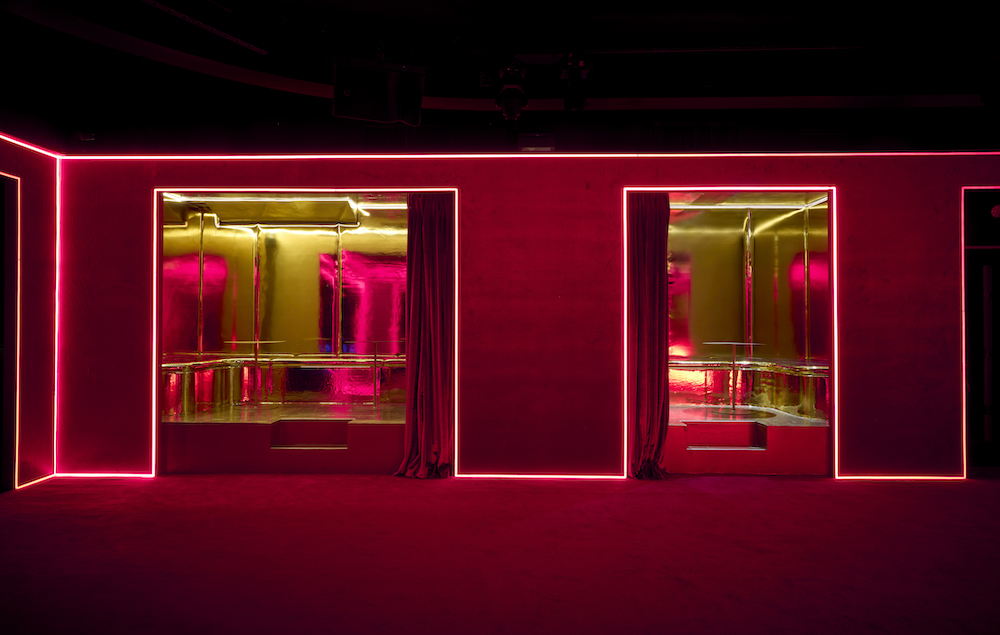Lonneke Gordijn and Ralph Nauta, the founders of Amsterdam-based Studio Drift, have been working side by side for over 10 years. After meeting at Design Academy Eindhoven, they formed their studio in 2006. Since then, Gordijn and Nauta have been creating intricate pieces that transcend furniture or lighting, employing cutting-edge technology to make their vision a reality. For years, we’ve been mesmerized by pieces like Fragile Future, a lighting sculpture that geometrically weaves bronze circuits around light-emitting dandelions. Or Shylight, a permanent installation at the Rijksmuseum in Amsterdam, a kinetic chandelier that beautifully blooms and retracts, mimicking the movement of a blossoming flower.
At The Armory Show last March, they installed a less delicate piece, Drifter, within Pace Gallery’s booth. The massive rectangular concrete block hummed and spun, seemingly levitating several feet about the ground. The poetic yet brutalist sculpture was a mere idea five years ago. At the fair, it perplexed viewers who were unable to figure out its physics, which Nauta and Gordijn enjoyed.
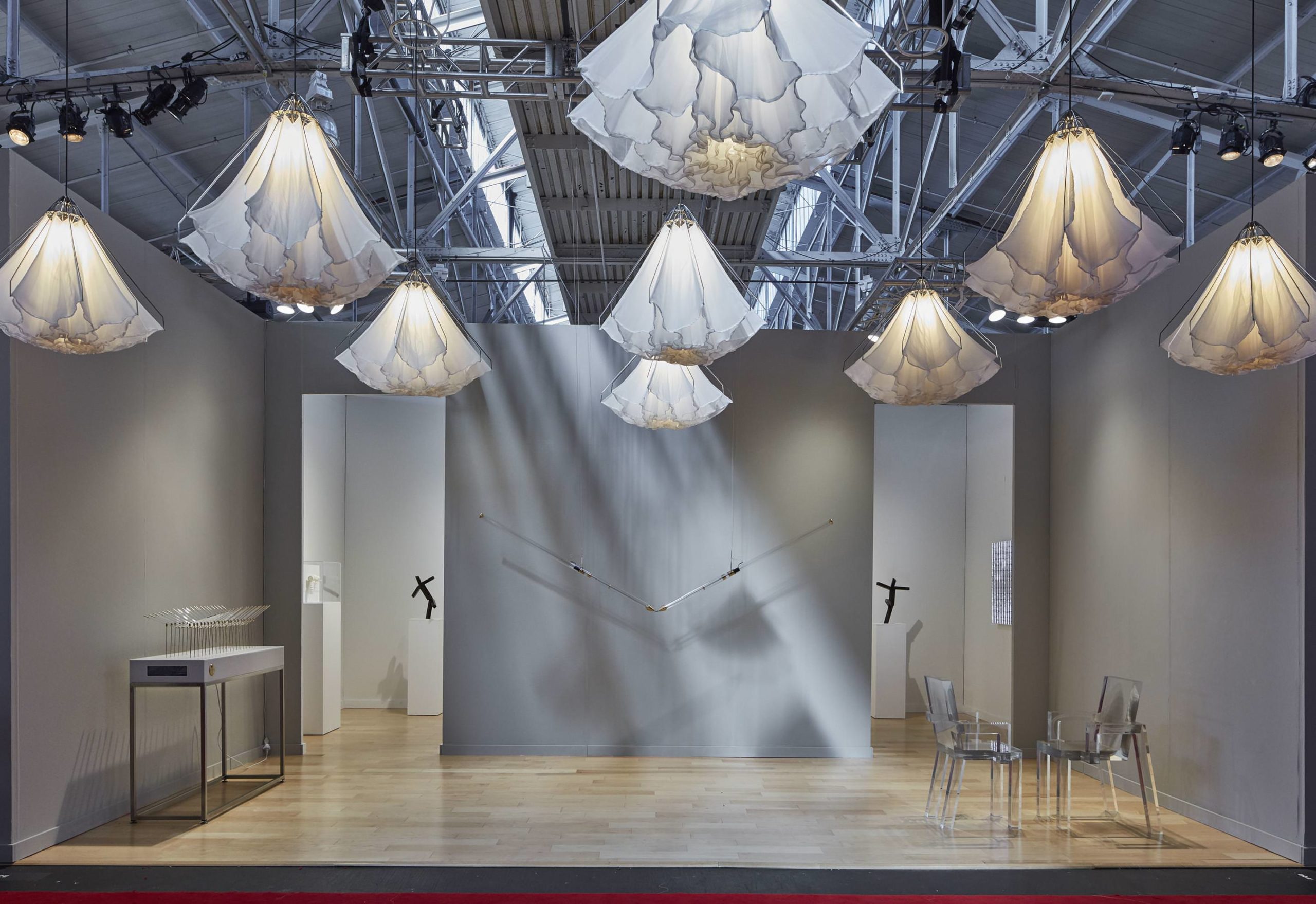
Studio Drift, Shylight, 2016.
Installation view at FOG DESIGN+ART 2017.
Silk, stainless steel, aluminum, led, motors, electronics.
39-15/16″ x 15-3/8″ x 15-3/8″ (101.4 cm x 39.1 cm x 39.1 cm), each.
© Studio Drift.
Courtesy Pace Gallery.
Similarly intrigued, Whitewall spoke with the artists about the gravity-defying project Drifter, as well as the mixed-reality digital environment of its sister installation, Concrete Storm.
WHITEWALL: Your work in general deals with human behavior and exploring that—testing it, trying it. Can you talk a little bit about that in terms of this project?
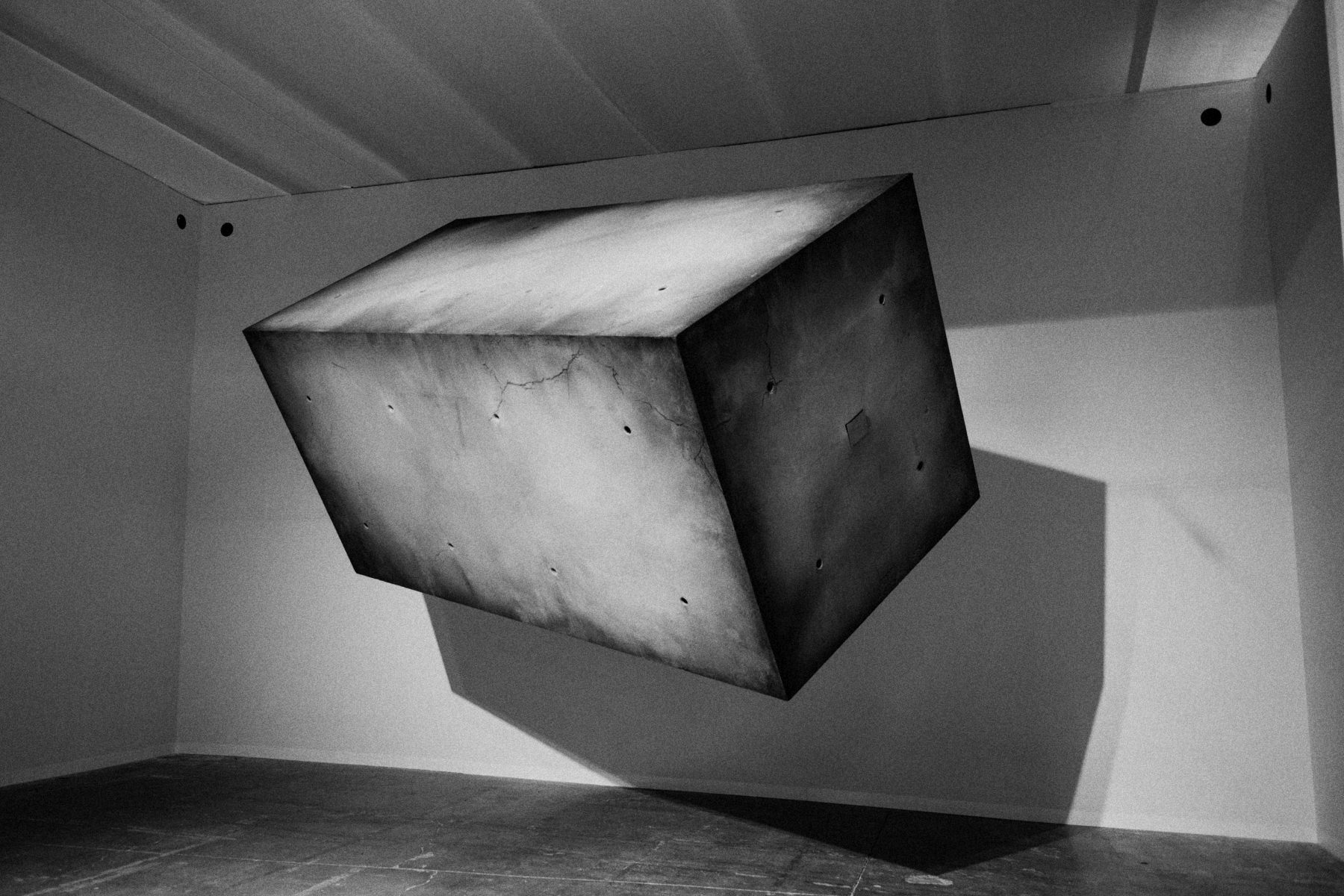
Drifter by Studio Drift.
© Studio Drift.
Courtesy Pace Gallery.
Photo by Shawn Brackbill.
LONNEKE GORDIJN: We seem to accept certain things just because they are how they are. And actually, everything that we do and that we have created, and how our world looks like and how we feel, is the direct result of choices that we’ve made or ideas that we once had.
Once, concrete was a science fiction idea. It didn’t exist. In 1516, Thomas More wrote Utopia. He was thinking of the ideal world, and he was describing a material like, “How could it be that we could build houses that resisted storm?” It was just an idea in a book. But now, five hundred years later, concrete is the most common thing that our world is built on. We can do anything with it.
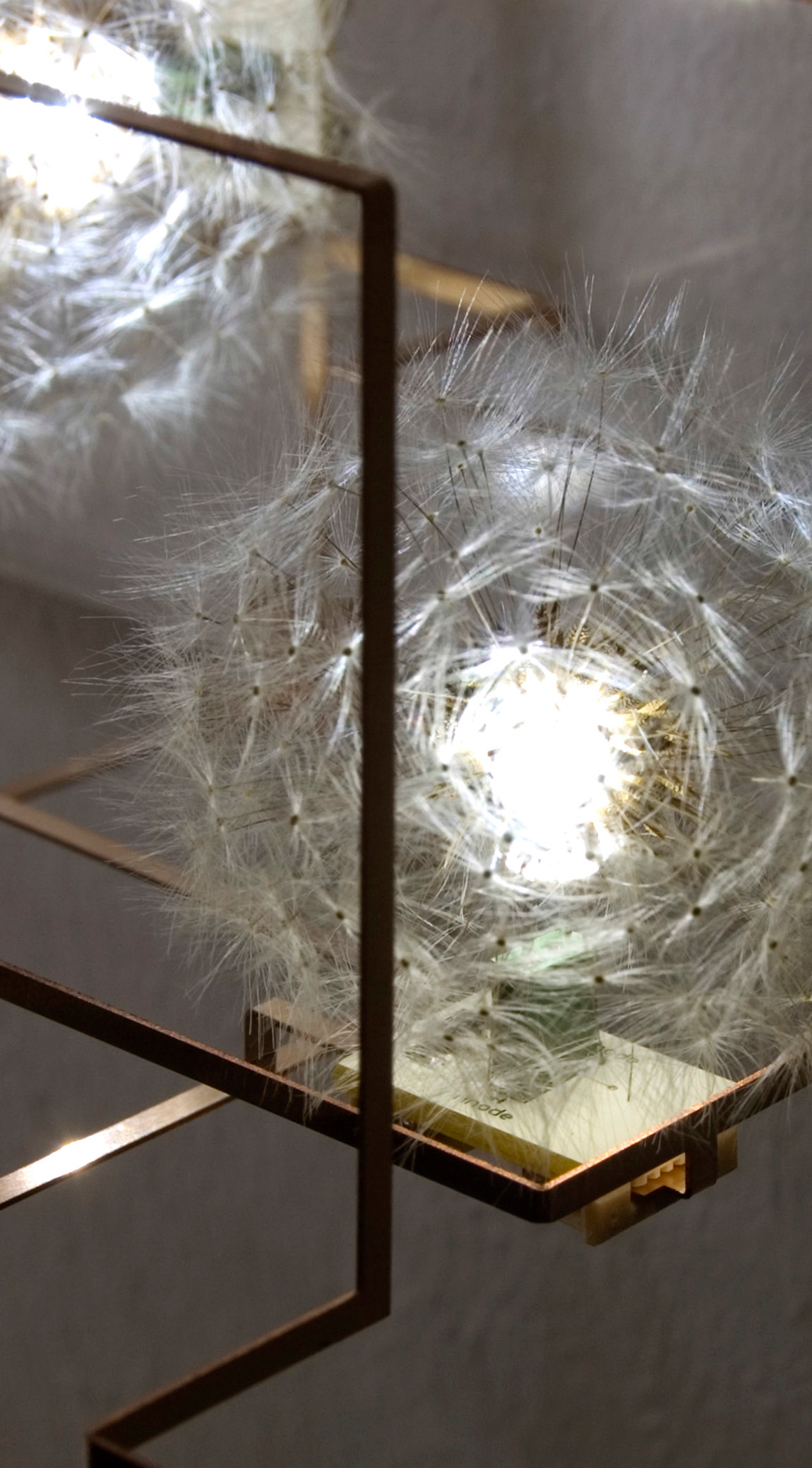
Studio Drift, detail of Fragile Future III.
31st Sao Paulo Biennale, Brazil, 2014.
Three-dimensional bronze electrical circuits connected to light emitting dandelions.
Modular work, dimensions variable.
© Studio Drift.
Courtesy Pace Gallery.
RALPH NAUTA: But the idea that something as normal as concrete in our world started as a science fiction idea just shows you how important ideas are. You should never limit yourself. This project is about opening up your mind. It’s about breaking rules and finding a connection with the space, and still exploring.
LG: We really like that it has a mind of its own, and it also feels a little bit—at the moment where we are in the world with politics, financial crises, et cetera—out of control. We as humans always try and have control of things, with systems and such, and all of those systems used to be straightforward. But we have no clue what’s happening anymore, and we feel that we are just here with the system growing wild and we have no control. Yet it still feels very peaceful and not threatening. We want to give a positive feeling and a message, and make things that are “not possible,” highly technological, but still very warm to us, familiar.
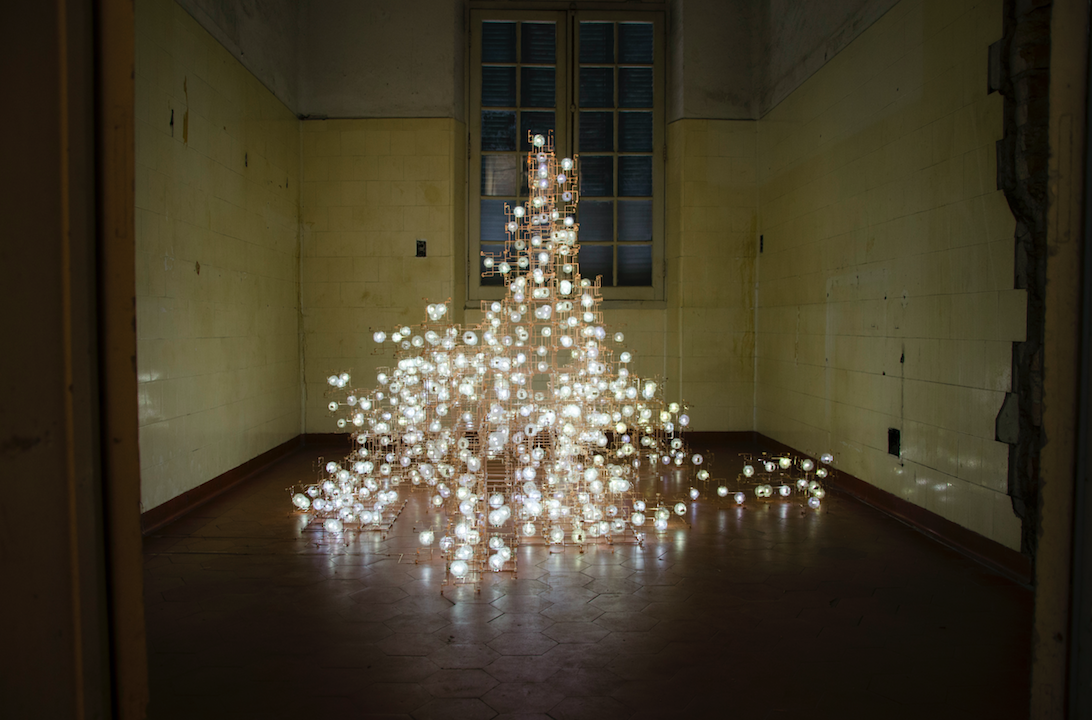
Studio Drift, Fragile Future III.
31st Sao Paulo Biennale, Brazil, 2014.
Three-dimensional bronze electrical circuits connected to light emitting dandelions.
Modular work, dimensions variable.
© Studio Drift.
Courtesy Pace Gallery.
WW: So how does it fly?
LG: When people first asked, my answer was, “It is concrete. And it flies.” And some people said, “No way! That’s not possible!” And the other half was like, “Okay. That perfectly makes sense.” It’s interesting to see the difference in how people are in the world—how they see things and accept things. It’s also dangerous. We can see that in my country right now, and in yours.
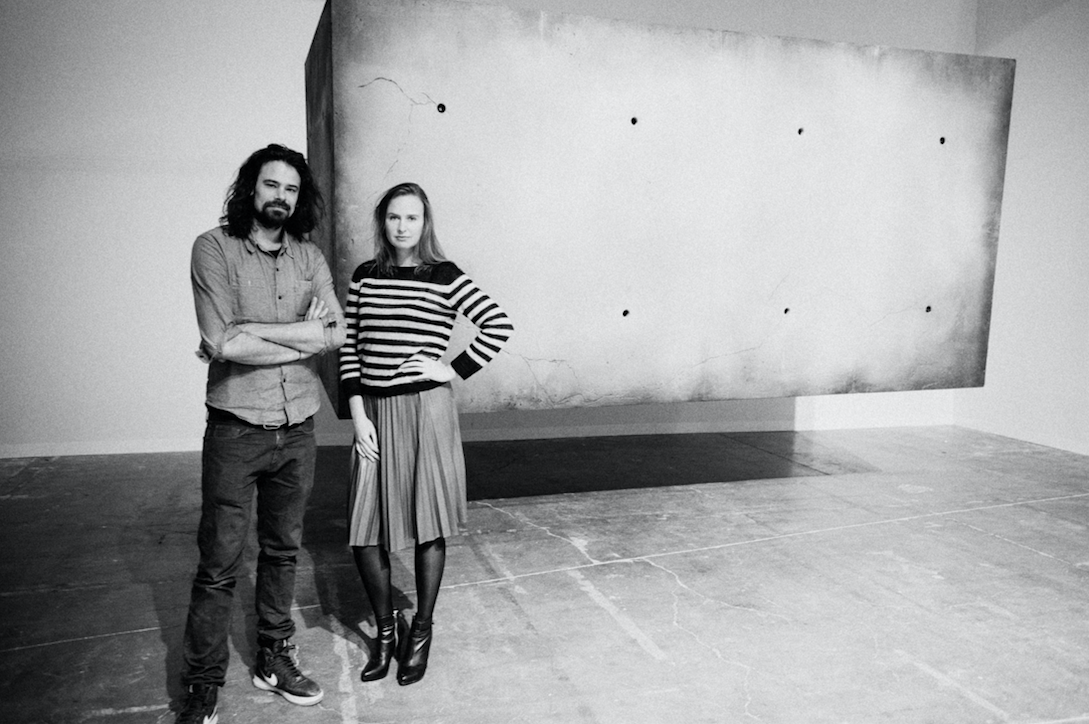
Studio Drift
We didn’t really want to talk about the technology, because yes, of course there’s technology. But we didn’t want it to be about that. Everyone was using their smartphones to try and figure it out—yet we don’t know how those even work, yet we trust that.
There are eight cameras in the booth, and on the block there are sensors, and they constantly communicate with each other to know where it is. The software reacts to the position of the block, which has motors and fans in it, that steers it in the right direction. There are also parts of it that very much make a lot of common sense, which I like.
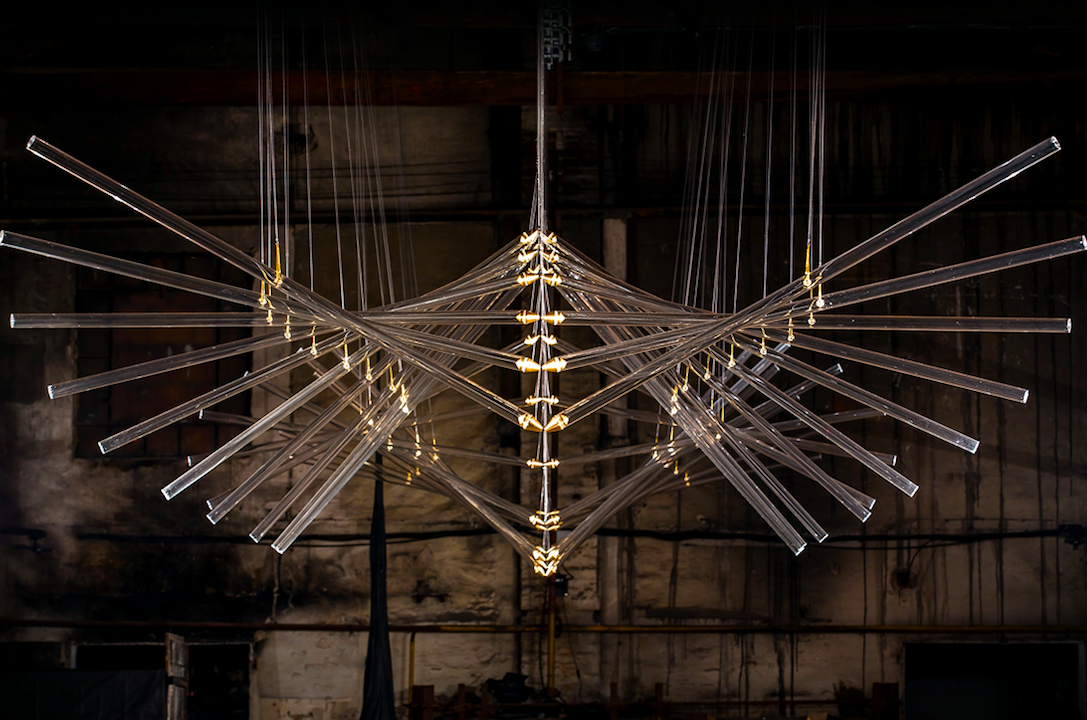
Studio Drift, In 20 steps, 2017.
Mixed media, 985 mm x 1,500 mm x 6,000 mm (38-3/4″ x 59-1/16″ x 19′ 8-1/4″).
© Studio Drift.
Photo by Juuk Schoorl.
Courtesy Pace Gallery.
WW: You’re also straddling this dynamic where the creations are technology and rational thinking, but also art and design—and your previous work like Shylight is a great example of that, too. Do you naturally keep your feet rooted in both fields?
LG: We don’t make a distinction. We went to a design academy, and that was our education. It was a very conceptual school. I never made a functional object. Ever. And neither did Ralph. Both of us really went to that school because we wanted to change the world. We are very much thinking about how the mind works and how people perceive the reality—and if it even matters, or if reality is even reality.
We don’t want the “artist” or “designer” stamp. That’s really not the point. The objects that people see as functional are actually not functional at all. The lights are not about lighting up a room, and they’ve never been like that.
WW: Also this year at the Armory show you presented Concrete Storm. You were also selected by Microsoft in collaboration with Artsy to create the first mixed reality (augmented reality) art piece for the Microsoft HoloLens. Can you tell us more about working in augmented reality?
LG: It was a big challenge because they wanted to do something that was in the physical reality, and then part of it in augmented reality. So we have created three concrete pillars in the booth, and then in the augmented reality the pillars are much higher. So in that, you hear a storm, winds blowing, and the pillars are moving in the wind. We see concrete as something that’s immovable, so in this environment you see things that can’t happen in that reality. We wanted to explore something you “couldn’t do.” In the booth, which was very small, we decided to extend the space in augmented reality. So even if you see people just staring at the wall, they’re looking at something that goes way beyond that. We wanted to see what was limiting us and how we could work with that. This was just the start—the first exploration. There are so many ideas and opportunities to explore, especially with realities. They blend.
This article is published in Whitewall’s 2017 Design Issue.






